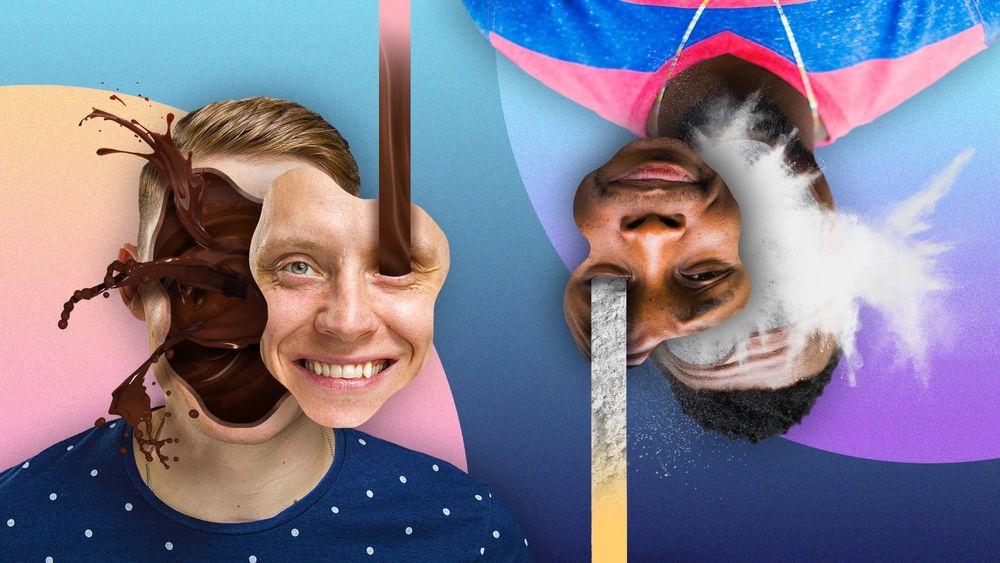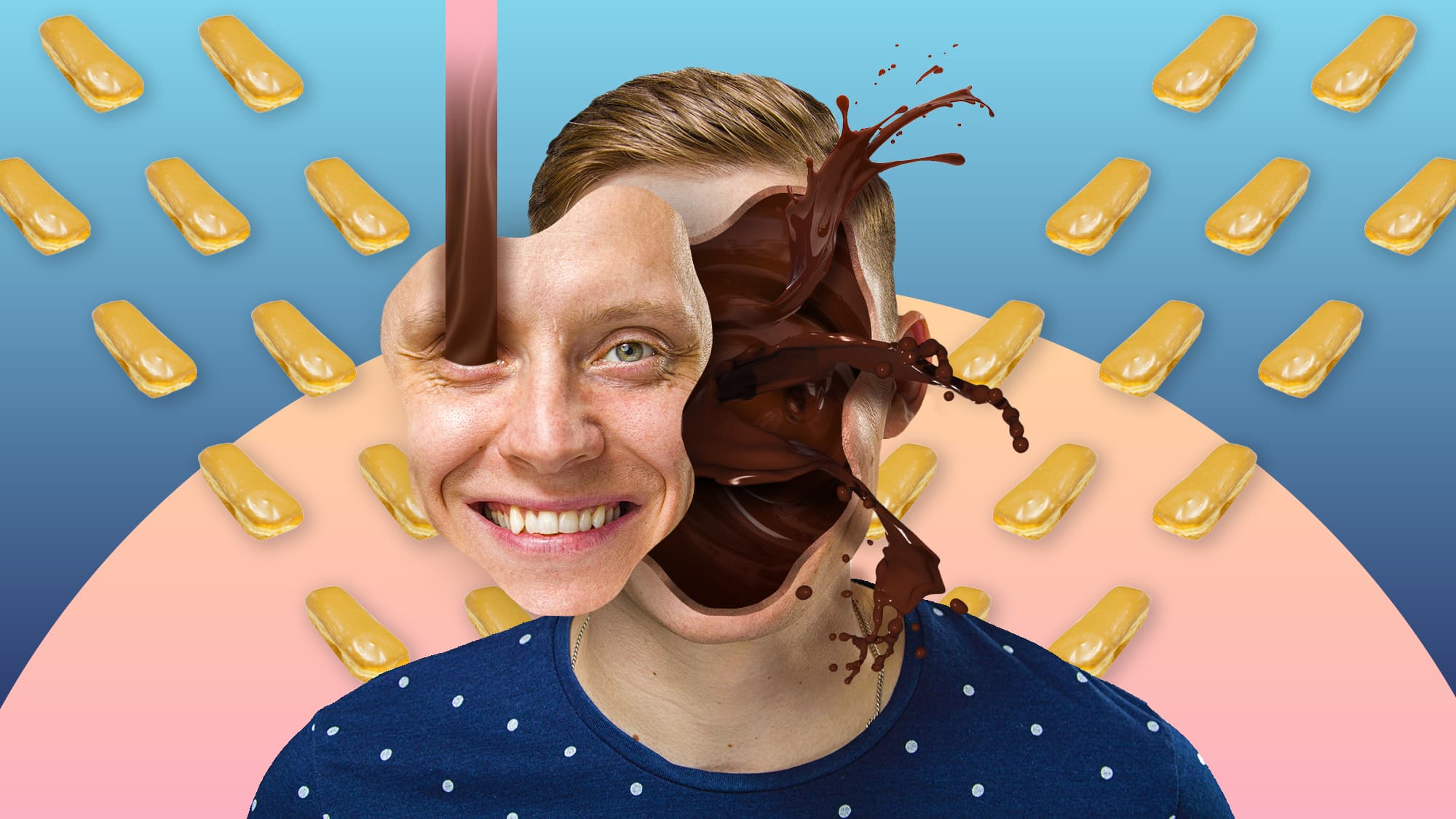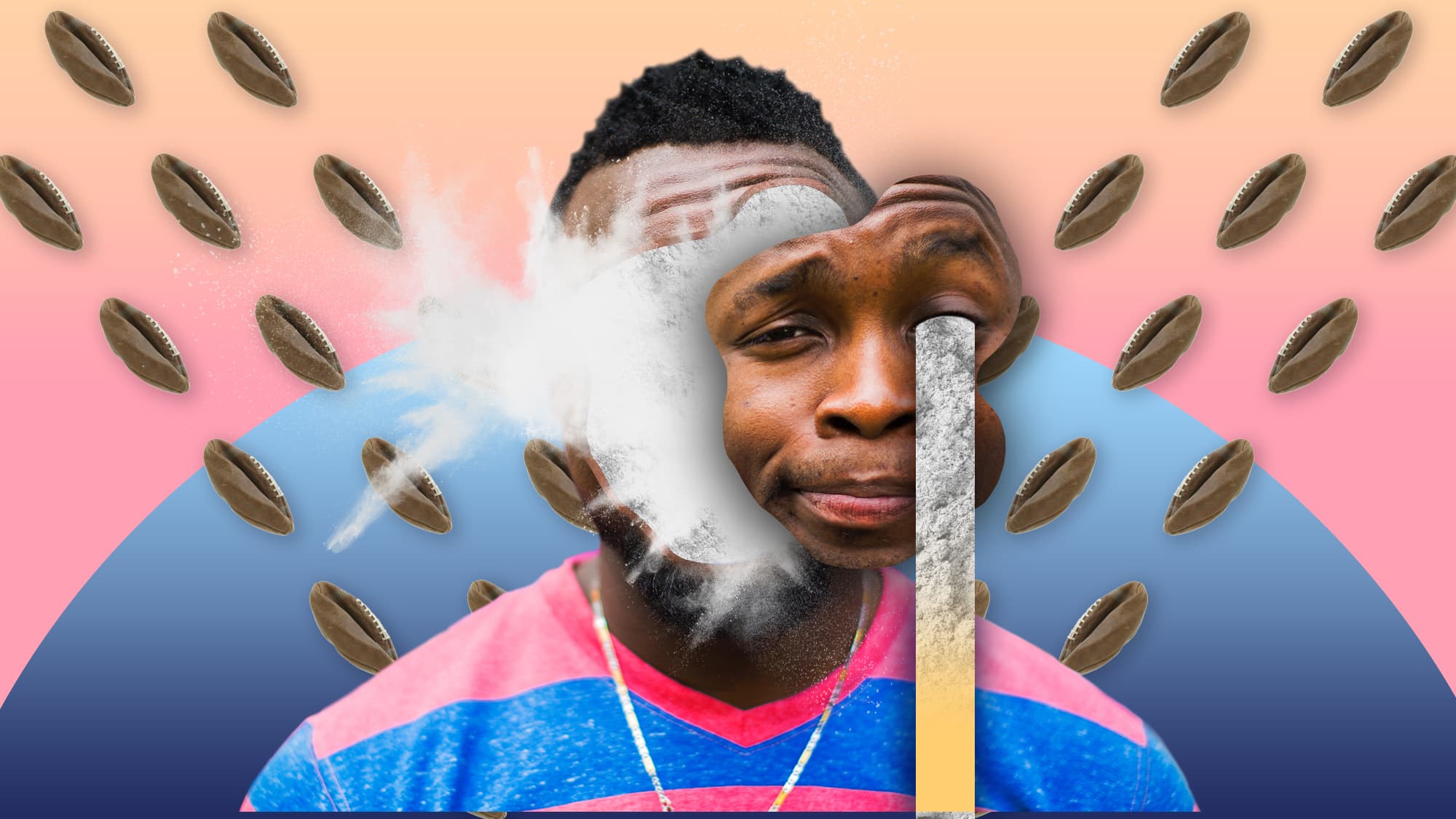Falling Out The Other Side
The Stories No One Sees

This is the second installment in a collection of essays called The Stories No One Sees. You can read Part One, Part Three, Part Four, and Part Five here.
I also host a bi-weekly podcast about sports. It’s good, I promise. You can download and subscribe on Apple or Spotify.
College football is perfect imperfection.
I realized this at a young age, scampering around BYU’s Wymount Terrace with a yellow nerf football tucked beneath my arm. I was five years old, a pale red-headed boy who combed his hair in a monstrous slick wave to the side. Life was strange. My mom would buy yards of neon colored cloth — black and orange checkerboard, blue and red hypno swirls — and sew clothing for my older brother and I. Wearing matching shorts and shirts we would strut around Provo like technicolor peacocks and I thought this was baller — in retrospect, not so much. Multiple times a week, I would be forced to eat something called Hungarian Goulash. It consisted of mashed potatoes, green beans, cheese, tomato sauce, and all manner of mismatched ingredients found in the far reaches of the pantry and nether regions of the fridge. I love my mom, but if this happened in 2018 I would turn her into child services and clip the handcuffs on myself.
Goulash aside, I was content — a homemade, neon-clad youngster playing out his football dreams on the vast green fields surrounding BYU’s student housing. It was 1991, the year after BYU quarterback Ty Detmer won the Heisman Trophy as college football’s best player. Alongside defensive back Derwin Gray, he would come around Wymount Terrace and (for unexplained reasons) play football with my friends and I. At the time I thought this was baller — in retrospect, maybe he also should be turned into child services. We would run around and try to snag tight spirals out of the cold October sky, our fingers red and numb, our breath misting in generous white plumes. It was glorious. Every Saturday we’d watch television — a JC Penney-brand box that weighed more than a full-grown Cougar — where Detmer did the same with (slightly) more competent receivers, dancing and weaving his way through defenders before launching high, arcing passes into the air. BYU ended the season as WAC champions on the back of a 52-52 tie with Marshall Faulk and San Diego State, then tied Iowa 13-13 in the Holiday Bowl. This confused my young brain. I already thought checkerboard neon was acceptable formal attire — how could I wrap my child-sized peabrain around a tie? The season would culminate with Miami and Washington splitting the national title and it sent me into a tizzy. A SPLIT NATIONAL TITLE?!?!? WHAT DOES THIS EVEN MEAN?!?!? I loved watching college football but was confused by almost everything — ties, multiple national champions, polls, the inability of Lavell Edwards to smile. I would cut out newspaper boxscores and examine them at night, convinced the secrets lay hidden in black and white. They did not, but as I grew older I began to understand the magnetic pull of this beautiful, imperfect sport: chaos is preferable to calm. There is excitement and passion bred from uncertainty. College football is anarchy presented as stable fact, a mirror of the shifting and exhilarating world around us. Every Saturday in autumn chaos calls, a bottle to be shaken, uncorked, and see what sprays.
A sports newsletter that will not scorch you with takes.
Sign up for the weekly Chris Rawle newsletter, a thoughtful exploration of the world through the prism of sports.
In the mid-90s, I was a youth in search of meaning.
I’d reached the phase where I was ready to separate from childhood and solidify myself as a conscious, wise being. I was eight. Wisdom meant closeting all homemade neon clothes, parting my hair in even more aggressive ways, and falling in love with the college football team I carry to present day: the Nebraska Cornhuskers, a triple-option machine that ground opponents to fine dust. I was mesmerized by their physicality, the audacity of running the same play over and over and daring opponents to stop what they knew was coming. And they won. This is very important to a young child who has three channels at his disposal, because teams that win are shown on television. Nebraska was a weekly staple on ABC and every Saturday, week by week, my love grew. Nebraska would win the national title in 1994, 1995, and 1997. I spent hours during school drawing variations of the red block “N”, littering my assignments with scribbled notes on the power of fullback dives. This sounds sociopathic and I can assure you, it was. If this same passion had been applied in other areas, I would be living in my mom’s basement, collecting people’s teeth on Craigslist, and eating dry peanut butter sandwiches for breakfast, lunch, and dinner.
Coach Tom Osborne retired after the 1997 season and business continued as usual. Nebraska was a Texas loss away from the national title in 1999 and played for the title in 2001, losing to a Miami team stocked with future NFLers. I was naive in my youth and nothing I had experienced led me to believe this steady constant — Nebraska a national power, fans granted a small piece of invincibility through their excellence — could be taken away. As an adult, I’ve learned better. Life is a collection of pursuits and realizations, and as Nebraska began the inevitable process of decay, I had to accept a painful truth: nothing lasts forever.
My parents didn’t believe in cable television but I did. When I was 12, I got a job as a janitor at a credit union just so I could purchase DirecTV. It cost everything I earned to have access to premium channels and I paid the price gladly. The installer showed up and I grilled him about the availability of ESPN Classic and Fox Sports Rocky Mountain, directing him to the area of the house where I needed three separate receivers installed. Yes, I had three tvs in the same room when I was 12, which would expand to five by the time I was 15 — I would host a room filled with friends every Saturday and we’d scream like mad scientists into the screens. On October 11, 2003, Missouri ended a 24-game losing streak to Nebraska and I snapped. The only logical reaction was to hurl every controller (eight in total) against the wall, each breaking in loud plastic cracks. My dad came barreling down the stairs convinced World War III had begun, only to realize his 17-year-old son was causing structural damage to his house while 10 high schoolers watched with a mixture of fascination, embarrassment, and bewilderment.
My teenage years included many other strange behaviors, most tied to college football. I liked a girl who asked me to a high school dance — despite my attraction, I told her I couldn’t go because I was watching Nebraska-Iowa State. Another night, we were together and I thought it wise to pop in a videotape of the 1996 Fiesta Bowl between Nebraska and Florida. We watched the entire game. I lost my marbles at every Tommie Frazier run and rewound multiple plays to marvel on their beauty. She looked at me with eyes that said, “You’re a f****** moron” and did not speak a word.
Even as Nebraska’s profile waned, my love for college football grew.
November 17, 2001, I attended BYU-Utah at Lavell Edwards Stadium with my friend and his dad. By this time I had moved from Provo to Spanish Fork and like the country yokels we were, we drove to the stadium on back roads with toothpicks in our mouths. The windows were down and crisp autumn air rushed through the car. We broke down BYU’s chances of staying undefeated and pondered on the prospect Luke Staley could continue his rushing success against Utah’s stout defensive front. At one point we drove through a Springville cow pasture and the tangy scent of manure swarmed our nostrils. My friend and I began rolling up the windows, stomachs churning — suddenly, the windows wouldn’t budge. We looked over at his dad, finger hammering the window lock button, eyes staring direct and hard at us. He took a deep whiff and said, “Leave them down, it’s an honest smell.” I was 15 but I knew what a pervert was.
We arrived at the stadium with excitement in our hearts and manure on our minds. The crowd was boiling. People say Mormons are generally nice but they haven’t seen what I’ve seen: 65,000 BYU fans whipped to a frenzy by an excess of chocolate milk and Cougar Tails. The student section was especially hyped, a bevy of brown bubbles, smeared maple icing, and Cosmo roars of first down. Utah controlled the game through three quarters and led by 11 with 10 minutes to play. The perfect season hung in the balance. BYU scored with under four minutes left to cut the lead to three — I was sitting in the south bleachers as the stadium rumbled, cold metallic benches vibrating to the persistent chorus of “Rise & Shout.” Darkness fell. The air changed from crisp to cold, blackness and bright yellow light obscured the surrounding mountains. BYU’s defense held and the Cougars stood 60 yards from victory. It took four plays. On the final one, Luke Staley raced down the right sideline and the night exploded. I didn’t care who won or lost, but that moment — an eyeblink between nervous stillness and violent, joyous sound — I’ll never forget. It was elastic madness distilled to its purest form, a collective body of people drinking deep from the well. Between that and my manure huffing, I was faded. My head felt light, a balloon I feared might slip away and get lost in that lonesome stretch of infinite dark. BYU closed out the game after a botched FG attempt and the frenzy reached its crescendo. My head rose higher, buffeted by currents of sound, zoobies howling like wolves into the night sky.

College football is built upon identifiable moments of sound.
Staley’s run was the first time this manifested to me but not the last. In Glendale, Arizona, Florida played Ohio State for the 2006 national championship and I was in attendance. I traveled there with three friends — along the way one was arrested for possession of ecstasy and our band was a little less merry. We spent the night in Kingman, AZ, posted bail in the morning, and were on our way. Gameday was a deep pool of nervous tension. The stadium was predominantly Buckeye red, splashed in small patches of Gator blue. Ohio State’s Ted Ginn Jr. returned the opening kick for a touchdown and I can now say I’ve lived through a nuclear blast. The roar swelled as he tightroped the sideline and threatened to remove all skin from my body — to this day I can only grow hair in very, very specific places.
November 24, 2007, Florida State at Florida. I traveled to Ben Hill Griffin Stadium for the first time, tailgating in the Florida sun with shirtless frat boys who shotgunned beers at 9 am. The stadium was a drunken madhouse by 3:30 kick — I stood in the UF student section as the ground rocked and swayed, blue and orange paint declaring, “This is...The Swamp.” Tim Tebow would win the Heisman Trophy that year and the first time he stepped on the field, it was an earthquake. Midway through the first quarter, Tebow rumbled for a 23-yard touchdown and The Swamp detonated. The student section was a mosh of bodies, alcohol, sweat, electricity, enough noise and energy to wake the dead. Both teams lined up for the extra point as the field, stadium, and sky shook. I scanned the playing surface, fearing corpses would burst from the earth and disrupt play with dry, bony laughter — they never arrived thanks to Tebow, who took a knee in prayer and, after thanking God for a touchdown, ordered peace between worlds.
At the Gator Bowl between West Virginia and Florida State, I confronted a devastating truth. We were sitting in the West Virginia section and it was as backwoods as one could imagine, racoon hats and chaw the accoutrements of choice. The first time West Virginia hit a big play, everyone jumped to their feet and screamed, “Chew tabacco, chew tabacco, chew tabacco, spit. If you ain’t a Mounty, you ain’t shit!” This is a bold statement. Being a Mounty means dressing like Daniel Boone, burning couches to celebrate middle school graduation, and spitting enough tobacco to drown a small pony. I stewed in a pool of brown Mounty juices for almost four hours and by the end, with clothing soaked in the tainted saliva of mountain men and miners, I left the stadium knowing for certain I wasn’t shit.
In 2009 I performed the dead man’s float on dry land.
I lived in a basement apartment with low ceilings, a great hindrance to my sports watching habits. This would come into play as Ndamukong Suh led Nebraska into the Big 12 Championship against 12-0 Texas. Suh, the undisputed best player on the nation’s best defense, was a terror. Anything in his path was squashed with dismissive ease, 300-pound men tossed aside like half-eaten Dominos crusts. Colt McCoy, Texas’ record-breaking quarterback and two-time Heisman finalist, was forced to roleplay as Raggedy Andy for the night. On one play Suh split a double-team, grabbed McCoy by his shoulderpads and the seat of his pants, and tossed his ass out the club. I couldn’t contain my glee. As McCoy cartwheeled through the air, I jumped to my feet and Captain America’d the ceiling, hand crunching against white plaster. It became one of those strange moments where pleasure meets pain and the brain can’t compute — mine started spitting out “painful orgasm” signals as I decided whether to laugh or cry. As the game wore on and Suh continued his dominance, the ceiling was obliterated. My brain jumped in a million different directions. After each play and subsequent ceiling punch, it sputtered somewhere between “passionate sex” and “family member death” and now I can’t process one without the other.
At long last, the time was at hand — Nebraska’s return to national prominence, ignited by Suh’s violent rage. Nebraska led 12-10 late in the fourth quarter, Texas in fringe field goal range. McCoy rolled out as time ticked down, hurling the ball into the stands as Suh buried him in the turf. The clock struck zero and Nebraska was back — I punched the ceiling twice for good measure and danced a maniacal jig (all arms, no lower body) as the refs signaled for review. I saw the replay and my heart sank. One second was put back on the clock and Texas kicker Hunter Lawrence jogged out for a 46-yard field goal. It split the uprights as time expired and all life left my body. I collapsed. It was my turn to roleplay Raggedy Andy, a moaning heap of slack limbs, disheveled hair, and Husker red. I lay there for what felt like hours floating in a great reservoir of sadness. My body lacked the ability to rise, my brain mistakenly processing the experience as sex due to feelings of overwhelming hopelessness and close proximity to the floor. In time, life seeped back to my flesh and bones. I stumbled to my feet covered in plaster dust, hunched and broken as an old man nearing death. My phone was flooded with condolence texts, friends and family pouring out expressions of sympathy and grief. I read them all quietly, took a deep breath, and began to understand things might never be what they once were.

I am now a 32-year-old adult rooting on the athletic exploits of child strangers — just writing this sentence feels like a crime. I’ve incorporated gambling into my college football routine, tying money and even more emotion to the bounces of an oblong ball. Saturdays are still, and will always be, sacred. It has been almost 20 years since Nebraska was a nationally relevant college football program. Scott Frost has returned home and many people (myself included) believe he’s the one to resurrect Nebraska from the dead. Maybe I have to believe this because the alternative is too depressing to confront: that I’m doomed to chase sparks from the past in spite of an open future.
I used to trust in expectations. I imagined belief would make things so, in football and life, that a strong enough will could warp the world to my demands. This belief has dissipated over time, replaced by something just as powerful: acceptance. There is something holy in the act of knowing we are powerless against so many things and persevering, something divine in tasting the wild and dazzling things this world can throw, seeking out beauty in the dark, and falling out the other side.
The human experience is perfect imperfection. A few days ago, I came across a picture of myself and a girl I used to date. We don’t talk anymore and that stings, because we shared something intimate at a time when both of us needed it. On a late summer evening, we traveled to Sundance and wandered careless over worn dirt paths, our shoes crunching against pine needles, dust growing in rings around our soles. A river rushed by unseen, green leaves filtering light from a falling sun. There was no one. Our laughter filled the fading sky as it changed from clear blue to a dark purple bruise, her arm threaded through the crook in mine. The snapshot captures us mid-laugh — her smile a brilliant flare, mine a lasting echo. She’s wearing a cream colored shirt split by a thin stripe, red, white and blue, sunlight casting a translucent glow over threads of her blonde hair. My hand rests against a silver of her exposed stomach, tracing the rise and fall of her breath. We are comfortable. And content. And strengthened by the very best of what we offered one another: acceptance void of expectation, in a place that’s safe and warm.
The end of an arc does not indicate failure. An ending is not an admission of sadness, or hopelessness, or anger, just an acknowledgement of the passing of time. It can be hard to let go of what we once had — we dwell on past moments of perfection inside an imperfect world, combing through these memories for hope in the future, convinced with absolute certainty we can find that feeling again. Eventually we accept, and move on, because chasing the past or future for too long means missing everything else along the way.
The Conditional
by Ada Limón
Say tomorrow doesn’t come.
Say the moon becomes an icy pit.
Say the sweet-gum tree is petrified.
Say the sun’s a foul black tire fire.
Say the owl’s eyes are pinpricks.
Say the raccoon’s a hot tar stain.
Say the shirt’s plastic ditch-litter.
Say the kitchen’s a cow’s corpse.
Say we never get to see it: bright
future, stuck like a bum star, never
coming close, never dazzling.
Say we never meet her. Never him.
Say we spend our last moments staring
at each other, hands knotted together,
clutching the dog, watching the sky burn.
Say, It doesn’t matter. Say, That would be
enough. Say you’d still want this: us alive,
right here, feeling lucky.
There is beauty in the stories no one sees.
I step into Memorial Stadium for the first time on September 20, 2014 — seven pm, Miami vs Nebraska. It’s a spectacular autumn day, temperature just right, orange sun disappearing from view with a soft exhale. The tunnel leading to our seats is narrow, a cement corridor packed with jostling bodies. A chant begins and I throw my head back and roar: “GO BIG RED! GO BIG RED!” Hundreds of voices bounce back and forth, reverberating in sonic waves, becoming thousands, millions. I can’t think. We inch forward towards the narrow opening and between shifting arms and legs, I sense everything: bright green artificial turf, pure white sideline paint, the opening notes of “Sirius” as Nebraska masses in the corner end zone. I step from the tunnel as Husker players take the field in a frenzied tide of red and white. My knees buckle — for three hours, I’m a madman. I holler, jeer, rip my hair in frustration. The game turns in the third quarter, an interception by Nebraska’s defense lighting a fuse that explodes in 90,000 people. I lose my mind and run the stadium stairs, my harsh breathing drowned in the crowd’s roar. A 50-year-old man stands with arms splayed wide, dark mustache turned upward as he yells. I jump into his arms at full speed — amazingly, we don’t fall. He hoists me high into a cauldron of noise, hope, and fury. I punch his chest with both hands, again, again, again, my arms blurring in a whir of insanity. He howls. I howl. Everyone around us howls. Our voices join together in a single vibration, splitting the earth and spiraling skyward — deafening in its power, profound in its absolution, threaded like neon cloth into the tapestry of this perfect night.
(Editor: Rachel Swan) (Artwork: Josh Fowlke)
If you enjoyed this article, you will enjoy The Chris Rawle Show. Here is a sampling of additional college football content in podcast form:
- The nostalgia of college football
- The butterfly effect of conference realignment
- The continual dud that is the college football playoff
Please download/subscribe on Apple or Spotify and help spread the word. Good day.

